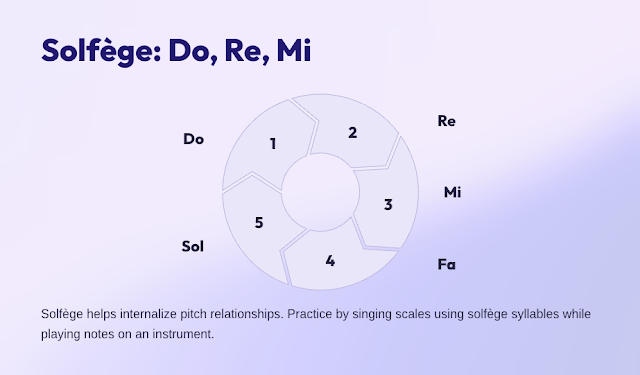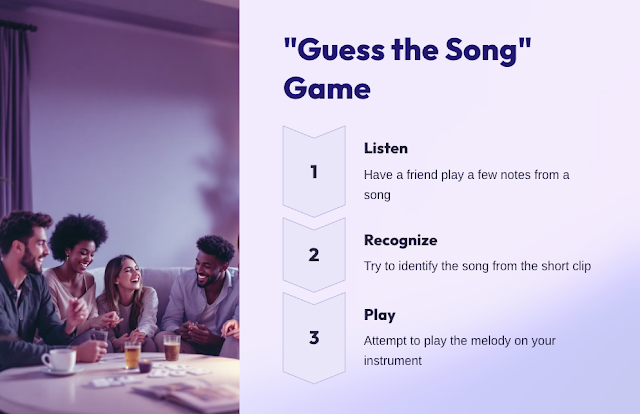Have you ever wondered how professional musicians can recognize chords, melodies, and harmonies just by listening? The secret is ear training—a skill that helps musicians identify sounds accurately without relying on an instrument.
Good ear training allows you to:
✔ Recognize chords, intervals, and scales by ear
✔ Play music without needing sheet music
✔ Improve improvisation and songwriting skills
✔ Understand and analyze music more deeply
Many beginners believe ear training is a natural talent, but in reality, it’s a skill anyone can develop with practice. In this guide, we’ll explore simple and effective ear training techniques to help you improve your musical listening skills.
🎵 1. Start with Basic Intervals (The Foundation of Ear Training)
Intervals are the distance between two notes, and recognizing them is the key to understanding melodies and harmonies.
🎶 Common Intervals & How to Recognize Them
Here are some of the most important intervals and famous songs that use them:
Minor 2nd → C – C# → “Jaws” theme
Major 2nd → C – D → “Happy Birthday”
Minor 3rd → C – E♭ → “Greensleeves”
Major 3rd → C – E → “When the Saints Go Marching In”
Perfect 4th → C – F → “Here Comes the Bride”
Perfect 5th → C – G → “Twinkle Twinkle Little Star”
Minor 6th → C – A♭ → “The Entertainer”
Major 6th → C – A → “My Bonnie Lies Over the Ocean”
Minor 7th → C – B♭ → “Somewhere” (West Side Story)
Major 7th → C – B → “Take On Me”
Octave → C – C → “Somewhere Over the Rainbow”
✅ Practice Tip:
Use an app like “Perfect Ear” or “EarMaster” to practice identifying intervals with your smartphone!
🎹 2. Train with Chord Recognition (Understanding Harmony by Ear)
Recognizing chords by ear is crucial for songwriting, improvisation, and playing by ear.
🎶 Start with These Basic Chords:
1. Major Chords (Happy & Bright) → C Major (C – E – G)
2. Minor Chords (Sad & Emotional) → A Minor (A – C – E)
3. Dominant 7th Chords (Bluesy & Tense) → G7 (G – B – D – F)
4. Diminished Chords (Dark & Unstable) → Bdim (B – D – F)
🎧 Practice Tip:
Listen to different chords and try to identify their emotional feel. You can also hum the root note and work your way up to the full chord.
🎤 3. Melody Playback (Train Your Brain to Recognize Tunes Faster)
Melody training involves listening to a tune and playing it back by ear. This helps with improvisation and transcription.
🎶 Step-by-Step Practice:
1️⃣ Pick a simple melody you know well (like “Twinkle Twinkle Little Star”)
2️⃣ Listen carefully & hum along
3️⃣ Try playing it on your instrument without sheet music
4️⃣ Repeat with more complex melodies
✅ Challenge:
Try playing a song you heard recently without looking up the chords!
🎧 4. Use Solfège (Do, Re, Mi) to Recognize Notes
Solfège helps musicians internalize pitch relationships and develop a better musical ear.
Example of Solfège Syllables:
🎶 Do – Re – Mi – Fa – Sol – La – Ti – Do
🎼 Practice Tip:
Sing scales using solfège while playing the notes on an instrument. Over time, your brain will associate each syllable with a pitch!
📻 5. Play the “Guess the Song” Game (A Fun Way to Train Your Ears)
A great way to improve ear training is by guessing songs from short clips or playing melodies by ear.
🎶 How to Play:
1️⃣ Have a friend play a few notes from a song
2️⃣ Try to recognize the song & name it
3️⃣ Try to play the melody on your instrument
✅ Bonus:
Try using an app like “SongPop” or “Shazam” to test how quickly you can identify songs.
🎯 Conclusion: Ear Training Takes Time, But It’s Worth It!
Like learning a new language, ear training takes time and practice. But the more you train, the easier it becomes to recognize melodies, chords, and harmonies by ear.
🎵 Final Tips:
✔ Practice daily for at least 10–15 minutes
✔ Start simple and gradually challenge yourself with harder exercises
✔ Use apps, online tools, and real music for practical ear training
✔ Try singing along to internalize the notes you hear
With patience and consistency, you’ll develop a strong musical ear that will transform your playing and listening skills! 🎶🎧
🔍 Related Posts You May Like:
• 🎼 [How to Recognize Chord Progressions by Ear]
• 🎸 [Beginner’s Guide to Playing Guitar Without Sheet Music]
• 🎹 [Best Digital Pianos for Ear Training & Improvisation]









Post a Comment